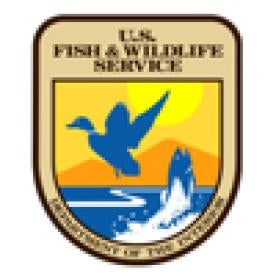On November 12, 2014, the United States Fish and Wildlife Service (FWS) announced that the Gunnison Sage-Grouse would be listed as a threatened species under the Endangered Species Act (ESA). Meanwhile, questions remain about how a related species, the Greater Sage-Grouse, will be categorized under ESA when FWS makes a decision on its status in September 2015. Because the sage-grouses’ habitat spans millions of acres and ranges across several western states that are considered by many to be prime locations for energy development, FWS’s treatment of the birds will undoubtedly have significant effects on oil, gas, and coal extraction, as well as wind, solar, and transmission line projects.
The Gunnison Sage-Grouse is a ground-dwelling bird which depends on contiguous areas of sagebrush for its food, cover, and reproduction habitats. Its current range is limited to southwestern Colorado and southeastern Utah, where the bird occupies approximately 940,000 acres. The Greater Sage-Grouse is a close relative—so close, in fact, that the two species were recognized as distinct as recently as 2000—with a range across 165 million acres, primarily in Wyoming, Montana, Nevada, and Idaho. Both species continue to decline in number as a consequence of habitat loss occasioned by human development.
FWS’s decision to list the Gunnison Sage-Grouse as threatened rather than endangered is viewed as controversial by some, particularly because FWS originally proposed to list the species as endangered in January 2013. Under ESA, a species deemed to be in danger of extinction throughout all or a significant portion of its range is categorized as endangered, whereas those species that are likely to become endangered within the foreseeable future are listed as threatened. 16 U.S.C. § 1532. ESA prohibits the “take” of species listed as threatened or endangered under the Act, and defines “take” as “to harass, harm, pursue, hunt, shoot, wound, kill, trap, capture, or collect, or to attempt to engage in any such conduct.” 16 U.S.C. § 1532. FWS has further clarified that “[s]ignificant habitat modification or degradation have the potential to harm Gunnison sage-grouse and may result in take of the species.”[1] FWS explained that listing the Gunnison Sage-Grouse as merely threatened gives FWS “the flexibility to tailor the conservation measures needed to protect the species through a special 4(d) rule, which it intends to propose in early 2015 to allow . . . ranchers, farmers and other landowners who commit to Gunnison sage-grouse conservation to continue to manage their lands without additional restrictions.”[2] According to FWS, the 4(d) rule may “exempt from ESA restrictions a number of ongoing activities, including properly managed livestock and ranching activities; routine agricultural practices on existing row crops, hay fields, and pastures; habitat improvement or protection projects . . . and limited expansion of existing agricultural, residential and commercial facilities.”[3] Such special regulations for threatened species, which could not be developed if the Gunnison Sage-Grouse were listed as endangered, are intended to “provide important flexibility to address species-human conflicts as the species approaches recovery and becomes more numerous and widespread.”[4] By listing a species as threatened rather than endangered, FWS also retains greater flexibility to issue permits for takes that would otherwise be prohibited, including takes related to zoological exhibition, educational purposes, and any other special purposes that FWS deems consistent with ESA.
Conservation groups, however, have indicated that they plan to sue FWS over its failure to afford the animal more stringent protections. On November 20, 2014, the Center for Biological Diversity and Western Watersheds Project gave a notice of intent to sue FWS over its categorization of the Gunnison Sage-Grouse, arguing that FWS violated ESA and the Administrative Procedure Act by, among other things, failing to use the best available science in making its determination and failing to provide public notice or opportunity for comment on its change in position that the species should be listed as threatened. However, conservation measures will likely involve some restrictions on development, including possible road closures during nesting season, consolidation of drilling on fewer sites, and use of directional drilling to minimize habitat disruption.[5] The nature and extent of such measures remains to be seen.
Industry and conservationists alike will want to pay close attention to FWS’s protections for the Gunnison Sage-Grouse and to the special 4(d) rule scheduled for 2015, as these may offer some indication about FWS’s categorization of and eventual protective measures for the Greater Sage-Grouse. Because the Greater Sage-Grouse enjoys a broader habitat than the Gunnison variant, and because much of that habitat is located in western states with developing conventional and nonconventional energy sectors, the animal’s treatment under ESA may ultimately have impacts on the energy industry in the region. If the Greater Sage-Grouse is listed as endangered, developers whose projects encroach onto the animal’s vast habitat could not hope to receive the benefit of a special 4(d) rule exclusion, and may be subject to additional precautions to avoid a take of the species‑including, for example, seasonal restrictions on drilling and limits on the number of oil and gas wells within key habitat regions.
ESA listing of the Greater Sage-Grouse will likely result in greater protections than those that are currently imposed by the western states where the bird is most prevalent. A report released on November 21, 2014 by the United States Geological Survey suggested, for example, that a minimum buffer of 3.1 miles around Greater Sage-Grouse breeding sites would be needed to conserve the species. This recommended distance is appreciably larger than the buffer zones that have been imposed around breeding sites by certain states in an effort to protect the bird: Montana and Wyoming, for example, adopted management plans that call for buffers of six-tenths of a mile in key Greater Sage-Grouse habitats.[6] Montana and Wyoming are among eleven western states that worked with FWS to develop sage-grouse management and conservation projects in an effort to avoid ESA listing of the birds.[7] By some estimates, these states have already invested about $200 million into conversation efforts, funds that are often generated from the sales of upland game bird licenses or stamps. Ken Mayer, former director of the Nevada Department of Wildlife, warns that an ESA listing of the Greater Sage-Grouse could potentially compromise that funding, as “[i]t would be difficult to justify the use of such hunter dollars for managing an unhunted species.”[8]
[1] FWS, Gunnison Sage-Grouse: Threatened Designation and Responsibilities under the Endangered Species Act, Nov. 2014, available here..
[2] FWS, U.S. Fish and Wildlife Service Protects Gunnison Sage-Grouse as Threatened Under Endangered Species Act, Nov. 12, 2014, available here.
[3] Id.
[4] FWS, What is the Difference Between Endangered and Threatened? Mar. 2003, available here.
[5] See Richard T. Stilwell, Gunnison Sage Will Give Energy Something to Grouse About, Law 360, Nov, 25, 2014, available here.
[6]See Matthew Brown, Report: Grouse Needs 3-Mile Buffer From Drilling, Nov. 21, 2014, available here.
[7] Amy Joi O’Donoghue, Report Highlights 11 States’ Efforts to Protect Sage Grouse, Mar. 24, 2014, available here.
[8] Angus M. Thuermer, Jr., Could Federal Protection Mire Sage Grouse Conservation? Oct. 28, 2014, available here.




 i
i

